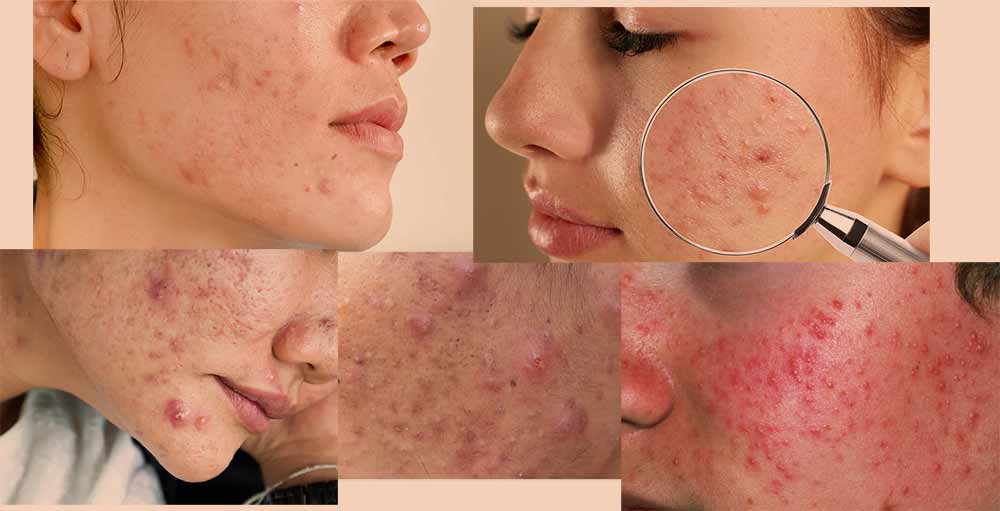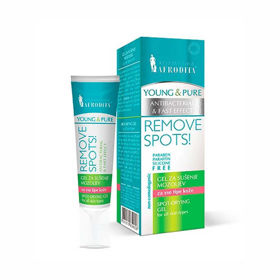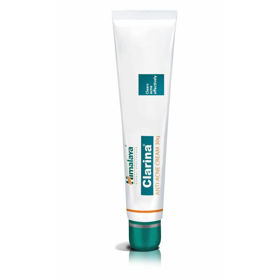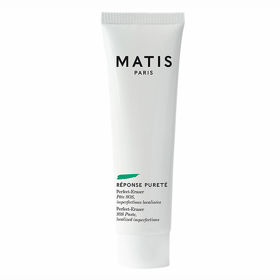Acne is when hair follicles become clogged with fat, sebum, and dead skin cells. The following factors mainly cause this condition: excessive sebum production, clogged hair follicles, bacterial overgrowth, and inflammation on the skin surface. Many tactics, including medications, can help you with this problem.
ACNE: Acne General | Acne - PICTURES | Symptoms | Consult a doctor | Causes of acne | Treatment | Conventional Medicine | Alternative Modes | Home Remedies | Prevention | Acne in a child | Questions and Answers | Sources/references
There is hardly a person who is not plagued by an outbreak of pimples at some point. This is why Acne is one of the most common skin problems. They begin when tiny hair follicles become clogged with the oily secretions of the skin's sebaceous glands. Blackheads appear as tiny, usually flat spots, the center of which darkens when exposed to air. Whiteheads are similar skin lesions, except they are colorless. Both types of pimples can develop into swollen, tender inflammation. Cysts or nodules are firm swellings under the skin's surface (the skin), which become inflamed and sometimes infected and usually occur on severely acne-prone skin.
Although Acne remains the scourge of teenagers, about 20% of all acne cases occur in adults. Acne usually appears during puberty and can worsen in people with oily skin. They occur in both sexes but may be more severe in boys. Women in their thirties and later have milder or moderate forms of Acne more often than men. In addition, they are also more prone to the appearance of rosacea.
Video content: Acne, video presentation

The stories of unhealthy diets and wild sex being said to cause Acne have been replaced by the simple truth that genetics and hormones are behind most forms of Acne. Giving up chocolate or scrubbing your face ten times a day won't change your tendency to this unpleasant, sometimes painful skin problem.
Acne - PICTURE VIEW

Acne is primarily an aesthetic problem, which teenagers are unfortunately well aware of. However, excessive acne breakouts often affect their self-esteem as well.
Symptoms of Acne
- Stubborn, recurring red dots or swellings on the skin, usually called pimples, can sometimes become inflamed or filled with pus and typically appear on the face, chest, shoulders, neck, or upper back, especially in adolescents.
- Dark dots with an opening in the middle are blackheads.
- Dots that appear as bulla under the skin and do not have an opening are whiteheads.
Video content: symptoms of Acne, explained by a medical doctor, self-help

- Red swellings or bullae, sometimes visibly filled with pus, are pustules from black or white blackheads.
- Inflamed, fluid-filled bullae are nodules or cysts measuring up to 2.5 cm in diameter.
- Abnormal redness of the cheeks and nose is a sign of rosacea, an acne-like disorder that affects adults, especially women over 30.
Consult your doctor if:
- Acne does not respond to treatment with over-the-counter medicines after two or three months; you may need treatment that a doctor must prescribe.
- You have a severe form of Acne, in which cysts form under the skin and blackheads constantly appear, quickly becoming inflamed; your dermatologist may prescribe a healthy prescription to keep the disease under control and prevent permanent scarring.
- You snorted excessively on your cheeks and nose; you may have rosacea, a disorder similar to Acne that can be controlled with appropriate antibiotic medication.
CAUSES
The cause of Acne is not entirely known. While poor hygiene, poor diet, and stress can worsen Acne, it's clear that they don't cause it. Instead, common Acne (acne vulgaris) begins to appear in teenagers due to the increased production of hormones. During puberty, girls and boys produce a lot of androgens - male sex hormones, including testosterone.
Image representation: Androgen structure

Androgens can increase the production of sebum, a substance that lubricates the skin and helps keep it moist, and keratin, the main component of hair. Tiny hair follicles, especially those on the face, neck, chest, and back, can become filled with sebum and keratin. As the follicles fill up and the bacteria multiply, blackheads or whiteheads appear on the skin's surface. This condition is called non-inflammatory Acne. If the wall of the follicle bursts due to the pressure and the sebum flows into the surrounding tissue, the result is a purulent pimple or inflammatory Acne. If the purulent pimple becomes infected, the matter becomes even more complicated: the inflammation can penetrate deep into the skin, creating a cyst that can burst and leave a temporary or permanent scar.
Video content: what causes Acne? How can you help yourself?

Various factors such as family history, stress, and the use of contraceptives and corticosteroids appear to be responsible for the tendency to develop Acne. For example, taking birth control pills can trigger Acne in some women, but it can prevent Acne in others, depending on the type of pill they take. In addition, anabolic steroids taken by some bodybuilders can also cause severe acne breakouts.
Acne has many subtypes. Some types - are newborn Acne (acne neonatorum) and
ROSACEA
Movie comedian W. C. Fields, with his bulbous nose and a pockmarked face, may have been one of the best examples of a rosacea victim, but fair-skinned women over 30 are most prone to the condition.
Rosacea begins with persistent, abnormal redness of the cheeks and nose, which becomes more pronounced after eating spicy food or drinking hot drinks or alcohol. The inflammation spreads, and some rosacea patients, usually men, get a severe form where the nose becomes completely red, thickened, and sensitive.
Video Content: All About Rosacea

Your doctor will prescribe an antibiotic or advise you to use corticosteroid ointment for milder cases. You can buy lotions or gels that contain sulfur as an active ingredient without a prescription. Since many rosacea sufferers also suffer from migraine headaches, some researchers believe intolerance to certain food types may be a common causative factor.
In some cases, large doses of vitamin B, especially vitamin B2 (riboflavin), help ideally. In severe cases of rosacea, surgical procedures or laser treatment can stop the inflammation and swelling.
Children's Acne (acne infantum) - sometimes occurs in newborns and children, usually boys. A pustular rash appears on the face but usually disappears within a few weeks without any consequences. However, adult people, usually women, who have managed to avoid pimples at ten, may develop a stubborn form of adult-onset Acne over the years. In some cases, the appearance of this Acne is an allergic reaction to cosmetics or food, while in others, it is related to menstruation. Both forms, premenstrual and postmenstrual Acne, are relatively milder than cosmetic breakouts.
The individual's androgen level is less responsible for the formation of Acne and more for the response of the human skin to increased sebum production. For example, propionibacterium acnes and Staphylococcus epidermidis are naturally produced in healthy hair follicles. However, if they are collected in filled vesicles before more, they can secrete enzymes that interfere with the breakdown of sebum and promote localized inflammation. Some people are more sensitive to this response, so sebum levels that cause a pimple or two in one person may cause a significant breakout or acute cystic Acne in another.
HEALING
The occasional pimple or two does not need to be treated. However, if we decide to take action, the ointments and cosmetic preparations we buy should be water-based and hypoallergenic. Even in cases where acne breakouts cannot be eliminated, conventional and alternative treatments can alleviate the condition. Conventional medicine favors treatment with drugs that inhibit the production of sebum and keratin, limit the growth of bacteria or stimulate the cleansing of pores in which skin cells have died. However, because many methods can have severe side effects, anyone with skin problems should be cautious before choosing a new treatment method.
Video content: Doctor Berg explains - the fastest way to get rid of Acne

People who suffer from severe acne problems should consult a dermatologist, who should also monitor the treatment.
CONVENTIONAL MEDICINE
To treat mild Acne, your doctor may recommend one of the over-the-counter preparations containing benzoyl peroxide or prescribe the anti-acne medication tretinoin (retinol), a derivative of vitamin A. Wash the skin with a mild soap that does not contain oils and fragrances. Applying a hot towel for a few minutes can speed up the process when a pus-filled pimple is about to burst. Infected pimples should only be opened by a nurse or doctor who uses surgical instruments and respects the principles of antisepsis. If you pop a pimple yourself, doing so can lead to further infection and the possibility of permanent scarring.
In cases of moderate Acne, treatment with tetracyclines and antibiotics, usually taken in pill form and sometimes in combination with tretinoin application to the affected skin, is mainly used. Other suitable antibiotics that we take are erythromycin and clindamycin.
Video content: antibiotic treatment of Acne

For chronically inflamed cysts, your doctor may prescribe isotretinoin. However, treatment with it should be carefully monitored due to potentially severe side effects, especially in women of childbearing age. A less common treatment is injecting triamcinolone, a corticosteroid type, directly into the cysts. This treatment may cause temporary darkening of the skin around the affected area in some patients. Since acne problems often improve in the summer sun, your dermatologist may recommend controlled exposure to ultraviolet light.

Patients using acne medications should know potential side effects and drug interactions. Treatment with tretinoin and benzoyl peroxide can make the skin red, dry, and sensitive to sunlight. Benzoyl peroxide can inhibit the healing effect of tretinoin, so never apply both to the skin simultaneously. Women taking antibiotics over a few weeks may become susceptible to yeast infections.
Some adults have known scars or pitted skin from cysts or deep blackheads that have been scratched or suppurated. Two relatively aggressive surgical procedures can improve the appearance of the skin: dermabrasion, in which the dermatologist scrapes away frozen.
ACUPRESSURE
1. Acupressure can help alleviate the inflammation, hormonal imbalance, and emotional distress associated with Acne. Press firmly on the Colon 11 point on the outer edge of the elbow crease with your thumb. Press for one minute and then repeat on the other hand.
2. To relieve skin irritability, press with the right thumb on the Large Intestine 4 point, between the thumb and forefinger of the left hand. Next, press against the bone above the index finger. Press for one minute and repeat on the other arm. You may not use this point if you are not.

Skin and chemical peeling (peeling). Both procedures remove the scarred surface above the intact skin layer. However, before deciding to undergo this type of treatment, discuss the procedures, necessary precautions, and expected success with at least two dermatologists.
ALTERNATIVE MODES
Some types of alternative acne treatments try to reduce inflammation and fight infection. Still, other approaches consider herbal remedies or diet to control factors that might cause Acne, such as stress. These types of approaches are effective for mild to moderate cases of Acne. Still, acne vulgaris and rosacea respond much more slowly to various types of treatment than many other problems. So be patient: many types of acne treatment require up to a year before satisfactory effects are seen.
CHINESE HERBS
Chinese herbs for Acne are intended to rid the skin of moisture and heat, which are believed to be the cause of Acne. The preparations most often used for this purpose also contain Cnidium monnieri and Lonicera japonica. Consult an expert in Chinese medicine about specific recipes.
HERBS
Echinacea (Echinacea spp), calendula officinalis (Calendula officinalis), and tea tree oil heal the skin and calm inflammation and itching. (Melaleuca spp) and Hydrastis (Hydrastis canadensis); the tincture of North American Iris (Iris versicolor) works well with Echinacea. Drinking a tea made from a mixture of nettle (Urtica dioica) and pitch tincture (Callium spp) can also help.
Video content: 4 secrets to getting rid of Acne

WARNING: Never use herbal preparations on babies without consulting a doctor.
If stress may be an additional factor in the formation of Acne, try relaxing with a cup of lavender (Lavandula officinalis) or chamomile (Matricaria recutita) tea. Preparing a facial sauna with any of the herbs above two to three times a week can also be beneficial.
HOMEOPATHY
For minor acne breakouts, you can speed up healing with hepar sulphuris or with silica in 6x potency tablets (three times a day for a week).
NUTRITION
Most doctors today believe Acne is not a food-related problem and rarely advise patients to change their diet. Some alternative practitioners, however, believe that a change in diet is the foundation of treatment. Although experts from both camps agree that chocolate, fats, and other questionable foods don't cause Acne, they still debate whether these nutrients worsen the condition.
Video content: a nutritionist explains which foods cause Acne.

Among the vitamins and minerals, nutritionists usually recommend zinc, which plays a role in how the body processes hormones. A 30 to 50 mg zinc supplement daily can help reduce inflammation and heal damaged skin. Chromium supplements boost the body's ability to break down glucose. High doses of vitamin A can reduce sebum and keratin production but can cause headaches, fatigue, muscle and joint pain, and other side effects. Therefore, taking large doses without the careful supervision of a doctor is not recommended. Antioxidant vitamin E can also be included in the treatment regimen in doses between 200 and 400 IU daily. Vitamin B6, which helps with hormone metabolism, can be especially effective for women who suffer from premenstrual Acne. The usual dose is 50 mg daily.
DOMESTIC MEDICINES
- Washing your face with unscented, oil-free, or medicated soap helps keep your skin clean, but rubbing already inflamed skin only worsens Acne.
- Resist temptation, and do not squeeze the pimples. Instead, let them ripen and burst, then gently wash them off.
- For mild to moderate Acne, try over-the-counter medications that contain benzoyl peroxide.
- Expose Acne moderately to sunlight, but be careful not to overdo it.
Video content: how to relieve Acne?

- Men with moderate to severe Acne should use a fresh razor every time they shave to reduce the risk of infection. Instead of aftershaves that contain alcohol, they should try herbal alternatives that also contain essential oils, such as lavender, chamomile, or tea tree oils.
PREVENTION
Because Acne is related to fluctuating hormone levels and possible genetic influences, many doctors believe there is no way to prevent it. Although it is generally accepted that neither proper hygiene nor proper nutrition can prevent new starts, the advice in the Nutrition chapter (left) can still be helpful.
Good general hygiene and care of sensitive skin are essential during adolescence. Basic rules include bathing or showering daily and washing hands and face with unscented soap. In addition, teenage girls should not use cosmetics regularly. Despite the impression to the contrary, very few (if any) commercial products can be said to have a good effect on Acne.
ACNE IN A CHILD POPULATION
Acne and impure skin are typical problems of puberty. Due to excessive sebum production, the hair follicles are blocked, and blackheads (comedones) are formed. When they are in the upper layers, they are black dots, but when they develop in deeper layers, they are whitish and have bumps.

It is necessary to distinguish impure skin during puberty from Acne with bacterial inflammation, which requires medical treatment.
In Acne, excessive sebum production is mixed with fatty acids and bacteria on the skin. Hair follicles become inflamed: characteristic red bumps, purulent bubbles, and pimples with a yellow purulent focus are formed. Abscesses can develop due to bacterial superinfection. Acne mainly only affects adolescents and young adults between the ages of 25 and 30 - very rarely also affects the face of babies and newborns.
Pimples of the face most significantly burden adolescents in this already sensitive period. For this reason, this otherwise benign disease must be treated. But, unfortunately, it takes months to years of patience to succeed.
Does the child need to see a doctor?
When all the described self-help measures for impure skin do not help, and Acne still develops, medical help is needed.
This is how you help the child.
• When the skin starts to become impure, you need to prevent the formation of comedones. The hair follicles must not be blocked so that the sebum can drain. Products from a pharmacy or drug store (active ingredient: vitamin A acid or benzoyl peroxide) dissolve warts and reduce sebum production.
Video content: what causes Acne in teenagers?

• Do not squeeze pimples and blackheads - they quickly become inflamed. You can do more harm than good. Impurities are removed from the skin much better by a beautician.
• Use non-alkaline synthetic soap for cleaning.
• Avoid certain foods such as chocolate, hazelnuts, fats, or spices, but a special diet does not prevent the formation of pimples.
This is how a doctor helps
• In severe inflammation, the doctor prescribes antibiotics to destroy the bacteria.
• Androgens (male hormones) increase Acne and appear in insignificant amounts in girls and women. For this reason, hormonal treatment (pills with an added anti-androgen) can benefit the skin of young women with severe Acne. However, the doctor decides on such treatment only exceptionally!
Frequently Asked Questions and Answers
What are the most common causes of Acne?
Let's take a look at the ten most common causes of Acne:
- Hormones - when hormones increase in boys and girls during puberty, the subcutaneous sebaceous glands enlarge and produce more sebum or oil. ...
- heredity
- Beauty products produced based on oil
- stress and anxiety
- medicines
- diets
- beard
- squeezing pimples[1].
Seven different types of Acne - what are they?
- white pimples - also known as "closed comedones," whiteheads are one of the most typical forms of Acne
- Blackheads - also called "open comedones," "get their name because they appear as dark spots on the skin
- papules
- pustules
- nodules
- clean
- milia[2].
What is the food that makes Acne worse?
Examples include white bread, cornflakes, rice, potato chips, white potatoes or French fries, donuts or other pastries, sugary drinks such as milkshakes, and white rice. Smaller studies suggest that a low-glycemic diet may reduce the acne you suffer from[3].
What is the most problematic acne?
Cystic Acne is a type of inflammatory Acne that is the most problematic, as it causes the formation of unpleasantly painful, pus-filled pimples deep under the skin. Acne occurs when oil and dead skin cells clog skin pores. In cystic Acne, bacteria also enter the pores and cause swelling or inflammation. Therefore, cystic Acne is the most problematic type of Acne [4].
Sources and references
Source: Family Health Guide. Conventional and alternative treatment, Dr. Jaro Lajovic, Publishing House Mladinska knjiga
1. 10 Things That Cause Acne Breakouts You Don't Know About - https://reverehealth.com
2. 7 DIFFERENT TYPES OF ACNE, EXPLAINED - https://averraglow.com
3. CAN THE RIGHT DIET GET RID OF ACNE? - https://www.aad.org
4. Cystic Acne - https://my.clevelandclinic.org












 Facebook
Facebook
 Instagram
Instagram
 info@moja-lekarna.com
info@moja-lekarna.com

